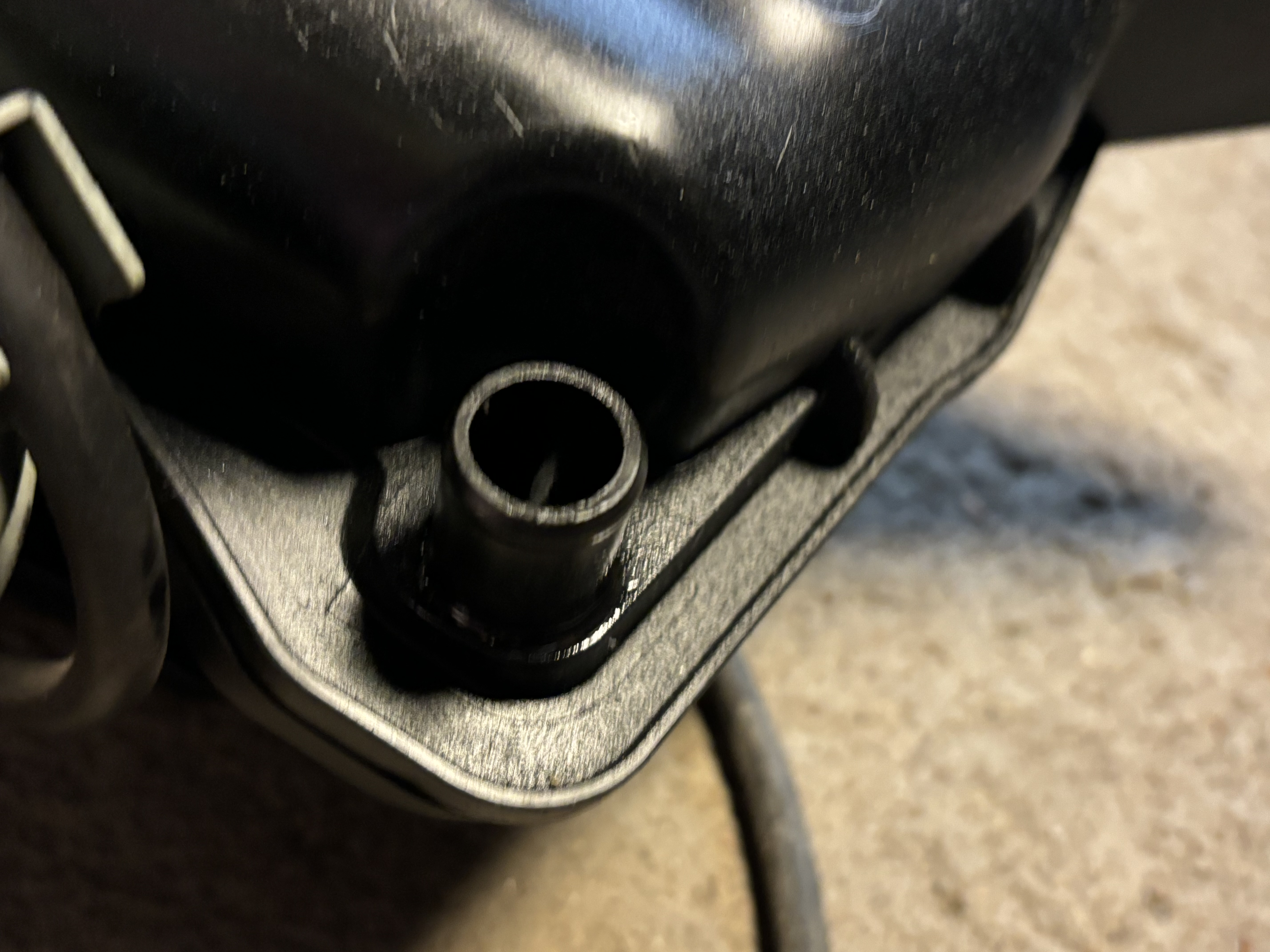NC Intake Manifold Pressure Testing

The NC intake manifold seems to work OK with the available forced induction option out there. But that does not mean it can’t leak precious hard earned boost before entering the combustion chamber.
Since I had to remove the IM anyways for the alternator relocation I did some pressure testing of the IM and misc. connected hoses/valves.
For testing I used a simple bicycle pump.
“Calibrated” it with a pressure tester ~ 1 psi off per 10 psi of pressure.

To seal off the IM I had to create some block off plates for the TB and runners using lexan and plate steel. They were sandwiched between the inner alu manifold and the TB for a perfect seal.
 |
 |
 |
First test: PCV valve and hose.
The hose does not have any clamps from the factory and started to leak already @ 5 psi and popped off ~8-9 psi.
The way the hose is supported by the side of the block and IM layout might prevent it from actually popping off even at 15 psi, but the leak will be substantial at that point.
 |
 |
 |
The PCV valve itself did not leak any boost even at 20 psi when testing with clamps. There were already oily residue on the IM side of the PCV hose. Could be from my 3 short trips with the EFR last fall.
For pressure testing the IM itself I used the PCV hose as source and blocked off the rest (brake booster, charcoal canister) It was immediately evident that the EGR pipe leaked at the flange. The O-ring could not cope at 10 psi. A fresh one might have been enough but to be sure I doubled up.
 |
 |
This worked great. No leaks at static 15psi. Solenoids for VTCS and IMRC had no leaks but some minor leak during IMRC operation around the axle flange.
 |
 |
The last test was the EGR valve which was kind of a surprise. It’s designed very much like a waste gate with the the poppet valve facing the exhaust manifold. But any pressure from the IM will act on top of the valve and force the valve open leaking boost into the exhaust manifold. My testing shows this is happening at ~ 7 psi
 |
 |
This is most likely not a problem for turbocharging as the exhaust manifold pressure is at best slightly lower than boost pressure. But for supercharged cars wit free flowing exhaust this is of real concern unless blocked off. I wonder how this affected my FMSC since I saw as much has 14 psi with the 2.8” pulley on the 2.0
Summary:
- PCV valve can hold plenty of boost but the unclamped hose starts leaking at ~5psi
- Boost can leak at the IM EGR pipe flange ( 10 psi ). Fixed with new O-rings.
- EGR valve leaks boost if pressure differential exceeds 7 psi from the exhaust manifold pressure ( supercharging… )

Comments